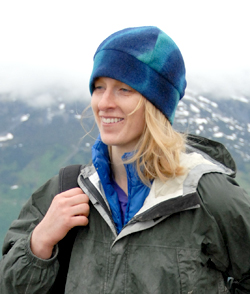
Bethany Baibak (’13, MSc Biology) recently received a 2013 California Sea Grant Fellowship to help answer that question.
For the next year, she’ll be working with the Calif. Department of Parks and Recreation in Sacramento to develop strategies and policies that protect coastal parks from sea level rise and other environmental factors.
Baibak was one of 13 fellows around the state—and seven California State University students—to receive the prestigious award. The state-funded program supports marine research and coastal conservation throughout California.

The fellowship will also provide her with the chance to explore a unique aspect of science: policy. “As scientists, we submit our research for publication but we rarely see if it’s actually applied or used by the management community,” Baibak says. “Developing policies is a really important aspect of how we deal with our natural resources.”
Baibak’s interest in science policy is what drew her to work with botany professor Frank Shaugnessey at HSU. His research focuses on eelgrass, a flowering plant that is a valuable habitat and food source for marine animals in Humboldt Bay. It also accounts for 45 percent of the eelgrass in California.
“I wanted to do something that was useful to the management community and I knew that working with Frank would give me the opportunity to have my research used by California Fish and Game,” she says.
Baibak’s current work with the California Department of Parks and Recreation will also have real-world applications. Policy makers will use the guidelines she helps develop as they decide how to best manage sea rise along California’s coast.
“It’s really difficult to predict what’s going to happen on a broad scale because sea rise level is influenced by a lot of local factors—even plate tectonics can factor in. Parks in areas where tectonics are causing the land to raise, may not notice many of any changes as sea levels rise. On the other hand, parks where tectonics are causing the land to sink may see large impacts as a result of sea level rise,” Baibak explains.
“What we do know is that sea level rise and storm surges contribute to the loss of cultural and natural resources, infrastructure, park facilities and decreased public access. This is a very complex issue that we have not had to deal with in recent history. It is a learning process for everyone involved.”
Baibak’s completed guidelines will be available to policy makers and individual parks in the next few years.
For more information on the California Sea Grant Fellowship, visit http://csgc.ucsd.edu/.